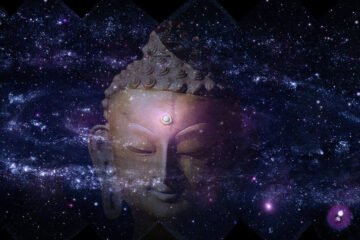
Click below to listen to this article:
Religion
Religion is often seen as a source of meaning, morality and identity for many people. But can it also be a way of transcending the self and achieving a higher state of consciousness? In this article, we will explore the concept of self-transcendence and how different religious traditions and practices can facilitate it. We will also examine the benefits and challenges of self-transcendence, as well as its implications for personal and social well-being.
What is religion?
Religion is a complex and multifaceted phenomenon that involves beliefs, practices, rituals, values, institutions, and communities related to the sacred, the divine, the transcendent, or ultimate reality. Religion can provide meaning, purpose, guidance, comfort, and hope for individuals and groups in various contexts and circumstances. It can also influence social, cultural, political, and ethical aspects of human life. Religion is not a monolithic or static category, but rather a dynamic and diverse field of human expression and experience that evolves over time, and across cultures.
Popular religions
According to various sources, such as Britannica, Pew Research Center, and ThoughtCo, the most widely practised religion in the world is Christianity, with more than two billion followers, or 31.1% of the world’s population. Christianity is a monotheistic religion that originated from Judaism and believes in Jesus Christ as the Son of God and the Messiah. Christianity has three major branches: Roman Catholicism, Eastern Orthodoxy, and Protestantism.
The second-largest religion in the world is Islam, with 1.9 billion adherents, or 24.9% of the world’s population. Islam is also a monotheistic religion that traces its roots to Abraham and believes in Allah as the only God and Muhammad as his final messenger. Islam has two main sects: Sunni and Shia.
The third-largest religion in the world is Hinduism, with 1.2 billion followers, or 15.2% of the world’s population. Hinduism is a polytheistic religion that originated in India and has a diverse range of beliefs and practices. Hinduism believes in reincarnation, karma, dharma, and moksha.
The fourth-largest religion in the world is Buddhism, with 506 million adherents, or 6.6% of the world’s population. Buddhism is a non-theistic religion that also originated in India and follows the teachings of Siddhārtha Gautama, or the Buddha. Buddhism teaches the Four Noble Truths and the Eightfold Path to achieve enlightenment and liberation from suffering.
The fifth-largest religion in the world is the Chinese traditional religion, with 394 million followers, or 5% of the world’s population. Chinese traditional religion is a complex mix of Confucianism, Taoism, Buddhism, and folk beliefs and practices. Chinese traditional religion emphasizes harmony, balance, ancestor worship, and ethical values.
The sixth-largest religion in the world is ethnic religions, with 300 million adherents, or 3% of the world’s population. Ethnic religions are religions that are specific to a certain ethnic group or culture and are not widely spread or converted to. Some examples of ethnic religions are Judaism, Shintoism, Sikhism, Zoroastrianism, and African traditional religions.
The seventh-largest religion in the world is Sikhism, with 26 million followers, or 0.3% of the world’s population. Sikhism is a monotheistic religion that originated in India and follows the teachings of Guru Nanak and his successors. Sikhism believes in one God, equality of all people, service to humanity, and meditation on God’s name.
Choosing a religion
Finding a religion that suits one’s beliefs and values can be a challenging and personal journey. There are many religions in the world, each with its own history, teachings, practices and traditions. Some religions claim to be the only true way to salvation, while others are more tolerant and inclusive of other faiths. How can an individual choose among such diverse and often conflicting options?
One possible approach is to start by exploring one’s own spirituality and world-view. What are the questions that matter most to you? What are the values that guide your life? Also, what are the sources of meaning and purpose for you? How do you relate to yourself, others and the divine? These questions can help you identify what kind of religion resonates with you and what kind of religion does not.
Another possible approach is to learn more about different religions and their followers. You can read books, watch documentaries, visit websites, listen to podcasts or attend events that introduce you to various religious traditions. You can also talk to people who practice different religions and ask them about their beliefs, experiences and challenges. Furthermore, you can compare and contrast different religions and see how they align with your own views and feelings.
Ultimately, finding a religion is a personal decision that requires reflection, research and experimentation. You may find a religion that fits you perfectly, or you may find that you prefer to mix and match elements from different religions, or you may find that you do not need a religion at all. Whatever you choose, remember that your religion should be a source of peace, joy and growth for you and not a source of conflict, guilt or fear.
How religion can encourage self-transcendence
Religion is a system of beliefs and practices that connects people to a transcendent reality, often referred to as God, the divine, the sacred, or the ultimate. It additionally provides a framework for understanding the meaning and purpose of life, as well as a moral code for guiding one’s actions. Religion also offers a way of coping with suffering, death, and the unknown.
One of the functions of religion is to encourage self-transcendence, which is the ability to go beyond one’s ego and personal interests and identify with a larger whole. This can take many forms, such as altruism, compassion, forgiveness, gratitude, humility, love, service, spirituality, and wisdom. Self-transcendence can also involve mystical experiences, in which one feels a direct connection or union with the transcendent reality.
Religion encourages self-transcendence by providing rituals, symbols, stories, doctrines, and communities that facilitate the expression and cultivation of these qualities. For example, prayer, meditation, worship, sacraments, and pilgrimage are religious practices that can help one to focus on the transcendent reality and detach from worldly concerns. Religious symbols, such as crosses, crescents, stars of David, mandalas, and icons are visual representations of the transcendent reality that can inspire awe and reverence. Religious stories, such as myths, legends, parables, and scriptures, are narratives that convey the meaning and value of self-transcendence. Doctrines, such as the concept of God’s love, grace, mercy, justice, and will, are teachings that explain the nature and implications of self-transcendence. Religious communities, such as churches, mosques, synagogues, temples, and monasteries, are groups of people who share a common faith and support each other in their quest for self-transcendence.
Religion is not the only source of self-transcendence. Some people may find self-transcendence through other means, such as art, music, nature, philosophy, science, or humanism. However, religion is a powerful and pervasive way of encouraging self-transcendence for many people across cultures and history.
Can religion pose a challenge to self transcendence?
Religion can also pose a challenge or obstacle to self transcendence, depending on how it is interpreted and practised. It can sometimes become rigid, dogmatic, or exclusive, leading to intolerance, conflict, or violence. Religion can also foster attachment to one’s own beliefs, rituals, or identity, creating a sense of separation from others who are different. Religion can hinder self transcendence by reinforcing one’s sense of self rather than transcending it.
Therefore, the relationship between religion and self transcendence is not straightforward or simple. It may depend on various factors such as the type, content, and intensity of religious beliefs and practices; the personal and social context of the individual; and the degree of openness and flexibility that one has towards other perspectives and experiences. Religion can be both a catalyst and a barrier to self transcendence, depending on how it is used and understood.
Further reading
If you are interested in learning more about the most popular religions in the world, here are some weblinks that provide more details. According to various sources, the most popular religions by population are Christianity, Islam, Hinduism, Buddhism, and Chinese traditional religion. Here are some weblinks for each of them:
Christianity: https://www.christianity.com/
Islam: https://www.islamreligion.com/
Hinduism: https://www.hinduismtoday.com/
Buddhism: https://www.buddhanet.net/
Chinese traditional religion: https://www.britannica.com/topic/Chinese-religion





0 Comments